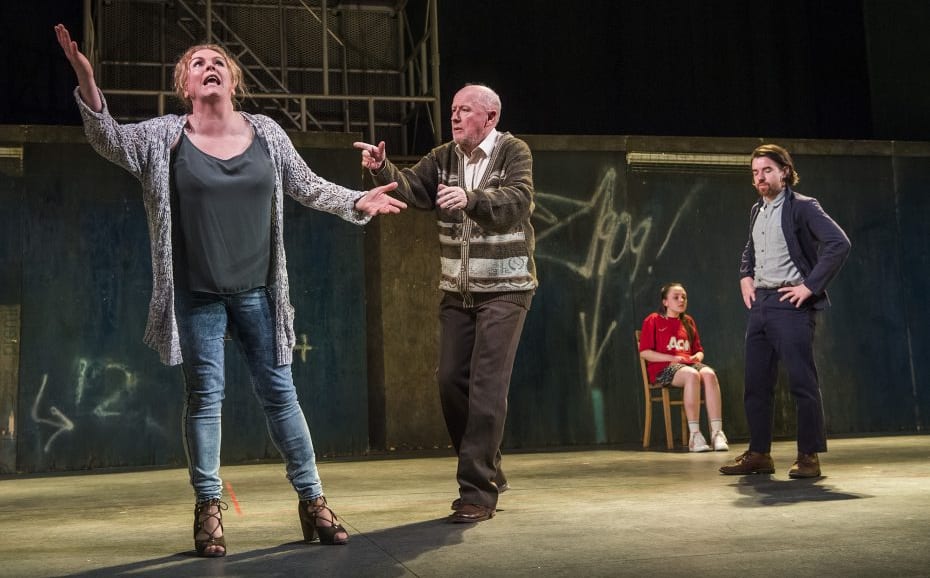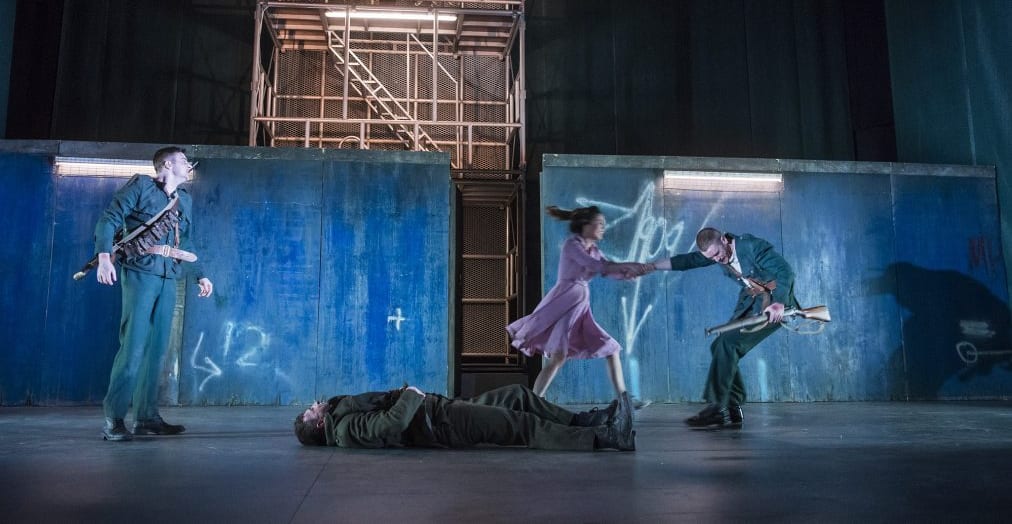Sean O’Casey’s 1926 play tells the story of the Easter Rising which had occurred a decade before; the figures that spearheaded this campaign were famously memorialised in Yeats’s poem ‘Easter 1916’. A potted history of the Rising is that it was ultimately an unsuccessful coup staged against dogmatic British rule; its painful consequences were seared into the minds of Irish men and women, and even now you can still see the physical scars – bullet holes in Dublin’s General Post Office. In The Plough and the Stars O’Casey provides a cross-section of Dublin society and a mixture of responses to war and patriotism. It exposes the devastation that is caused by military conflict and how detrimental this is for domestic harmony above all things.
The Plough and the Stars caused a riot in the Abbey Theatre when it was performed on February 11 1926. This is because it represented O’Casey’s feelings of disillusionment with excessive patriotism, which he felt ignored the reality of destruction and sadness emerging from the violence. This was a provocative way to paint the fight for national freedom, but it seems to be the most truthful perspective, since it is one which pulls no punches, adamantly refusing to deny the terrors that transpired.
O’Casey’s play works against what Diarmaid Ferriter terms “a stained glass approach” to consecrating history. Peter Flynn (Niall Buggy) is a clownish figure that embodies the criticism of this rose-tinted historiography. He is old and buffoonish, dressed in ornamental regalia he appears more like a Leprechaun than a soldier, constantly tormented by The Young Covey (Ciarán O’Brien) who preaches Marxist ideals, brandishing his red copy of the Communist jargon-filled ‘Jenersky’s Thesis’ in the face of anyone who dares to pay attention to him. Neither of these two characters are role models: they ignore the idea of organic and local politics and prove to be out of touch with reality. Buggy puts in a good performance as a distracted preening figure, too steeped in the past of pomp and ceremony to be considered an elderly authority, and O’Brien is entertaining to observe with his hysterical radicalism, too infatuated with the idealistic politics of foreign manifestoes, often switching to an airy lexicon as he pontificates, which is so divorced from the Dublin idiom as to seem another language entirely.
Rallying speeches given by Patrick Pearce, president of the republic, dripping with persuasive rhetoric invade the set sporadically, where characters are suddenly bathed in a bright white light, seemingly entranced by the voice of God. But Pearce’s claim that “Bloodshed is a cleansing and sanctifying thing” is problematic to say the least. The fiction of such propaganda is felt keenly in the growing fissure of Jack and Nora’s marriage. Nora Clitheroe (Kate Stanley Brennan) is a pretty housewife, clothed in an elegant pink dress, who seeks to keep war outside her idyllic home. Yet her husband Jack (Ian Lloyd Anderson), who has been promoted in the army, is forced to leave to attend duties; his soft cooing of sweet nothings to Nora is interrupted by a call to the battlefield – with this we bid an unfortunate goodbye to nuptial happiness.

The action of The Plough and the Stars focuses largely on characters separate from the actual fighting. Fluther (Phelim Drew) is a loud-mouthed abrasive drunk, expertly handled by Drew, who rants and raves about his own virility. Rosie Redmond (Nyree Yergainharsian) hopes to drown her sorrows with Fluther: she’s a prostitute, painted with make-up and clothed in furs, heels and a tight dress, but for all her outspoken bragging and confident presence she is mocked by the bar clientele – she’s a kind of tragic figure whose industry is defined by submitting to broken men.
The set is designed well by Jon Bausor and is economical in its changes as well as telling of harshness in tenement life. There were roughly 25,000 families in tenement blocks at the time of the Rising, and this cramped and uncomfortable living is evident in the graffiti, vandalism and general filth of the surroundings. This depravity pushes people to rely on survival instincts: at one point Bessie Burgess (Hilda Fay) and Mrs Gogan (Janet Moran) see the confusion of war as an opportunity to loot a pramful of tawdry wares, which is both comical and desperate.
The events spiral out of control as British forces take control of Dublin. The set actually collapses as a large scaffold is brought down, and Nora descends into a demented state of reality-denying isolation – this is what really crowns Brennan’s performance. Death comes from all directions and O’Casey’s last flourish is to show how pervasively damaging this conflict was: Nora retreats into a fairy-tale delusion of life before the Rising that is horrifying to watch.

